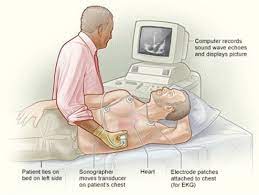2D ECHO

2D echocardiography, popularly called 2D echo, is a non-invasive test used to analyze the functioning and assess the sections of your heart. This test gives images of the different parts of the heart with the help of sound vibrations.It assists in checking damages, blockages, and blood flow rate.
Doctors recommend regular 2D echo tests to analyze and treat any heart issues at the early stages, keeping you healthy and active as you grow old.
Why should you undergo a 2D echo?
2D Echo is done to detect the following heart conditions:
- Any underlying heart diseases or abnormalities
- Congenital heart diseases and blood clots or tumors
- Malfunctioning of the heart valve
- Abnormality of blood flow within the heart
2D echo gives information related to the functioning of your heart, diagnoses malfunctions, and plans the treatment for the developing disease.
Not only for your doctor but regular 2D echo checkups also help your mind be at peace.
Book your 2D echo test today and see how trading your favorite fast food for a healthy diet works for your heart’s health.
An echocardiogram is a noninvasive (the skin is not pierced) procedure used to assess the heart’s function and structures. During the procedure, a transducer (like a microphone) sends out sound waves at a frequency too high to be heard. When the transducer is placed on the chest at certain locations and angles, the sound waves move through the skin and other body tissues to the heart tissues, where the waves bounce or “echo” off of the heart structures. These sound waves are sent to a computer that can create moving images of the heart walls and valves.
This imaging procedure is not invasive and carries little to no risks. You may have discomfort from the positioning of the transducer because it can put pressure on the surface of the body. For some people, having to lie still on the exam table for the length of the procedure may cause some discomfort or pain.
You may have other risks depending on your specific health condition. Discuss any concerns with your doctor before the procedure.
